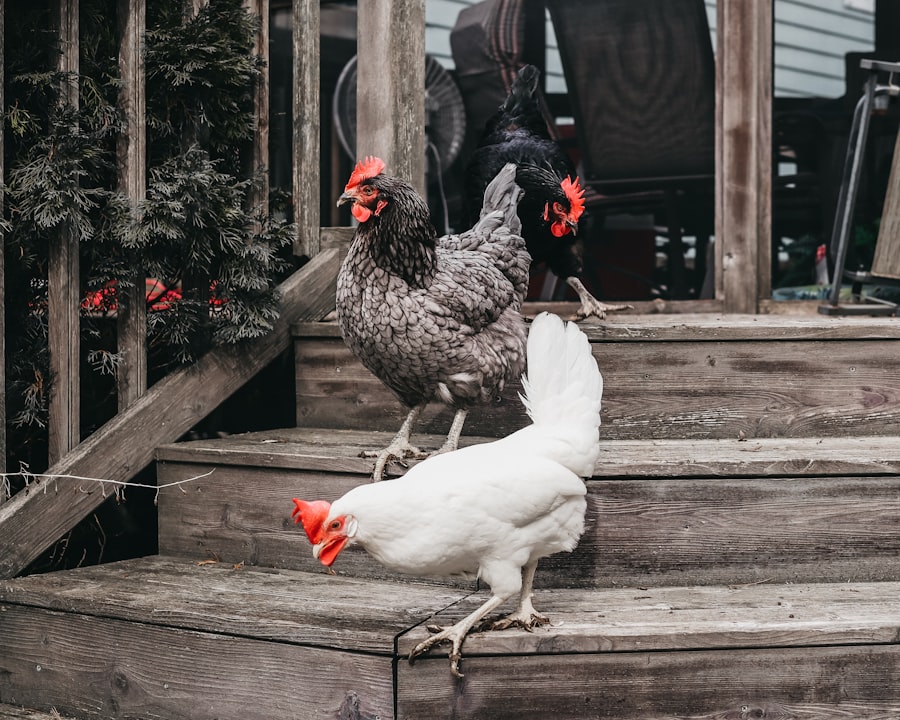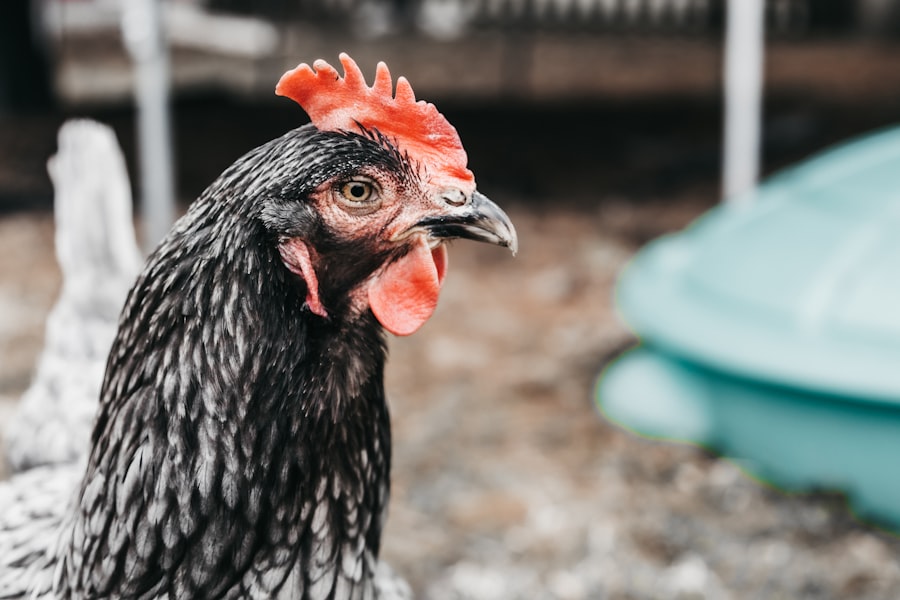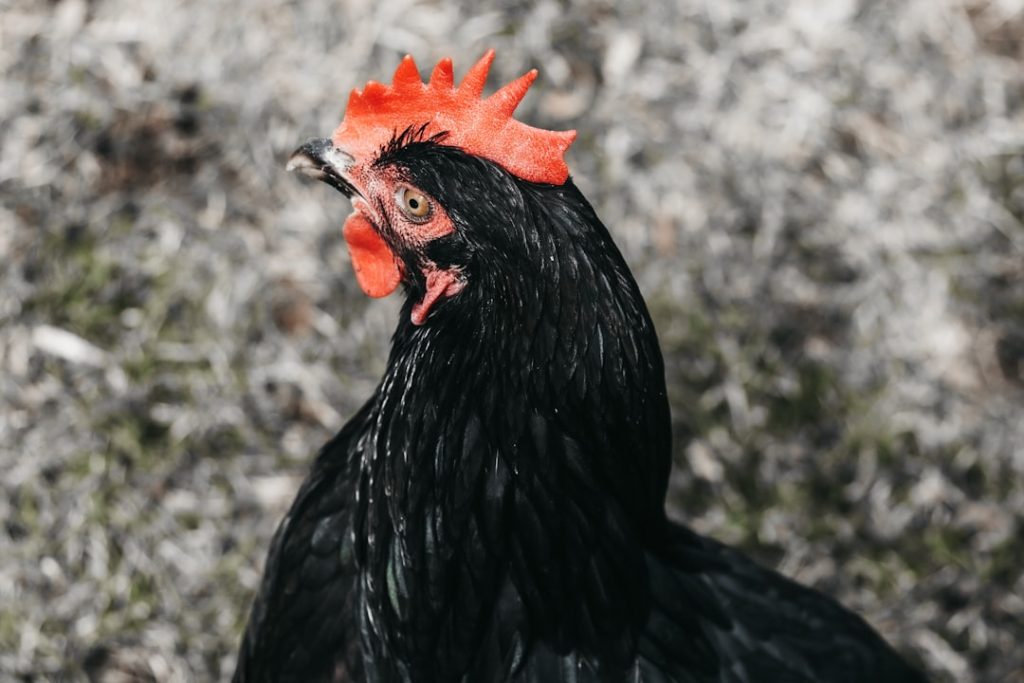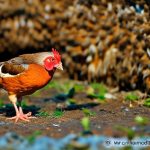Coyotes are adaptable and intelligent predators that present a significant risk to backyard chicken coops. These canines exhibit opportunistic hunting behavior and can scale fences, dig under enclosures, and manipulate latches to access their prey. While primarily nocturnal, coyotes may also be active during daylight hours, particularly in areas where they have habituated to human presence.
Their stalking and ambushing skills make them a considerable threat to free-ranging chickens. Coyotes are territorial animals and will repeatedly return to identified food sources, such as chicken coops. These predators possess acute senses of smell and hearing, which they utilize to locate potential prey.
The scent and sounds of chickens can attract coyotes to coop areas. Understanding coyote behavior and habits is essential for implementing effective protective strategies for chickens. By comprehending how coyotes hunt and interact with their surroundings, chicken owners can take proactive measures to secure their coops and deter these predators from targeting their flocks.
Table of Contents
- 1 Securing the Coop: Building a Safe and Predator-Proof Enclosure
- 2 Using Deterrents: Scents, Sounds, and Visuals to Keep Coyotes at Bay
- 3 Implementing Safety Measures: Supervision and Monitoring of Chickens
- 4 Nighttime Protection: Locking Up Chickens and Using Motion-Activated Lights
- 5 Creating a Barrier: Fencing and Landscaping to Prevent Coyote Access
- 6 Working with the Community: Educating Neighbors and Reporting Coyote Activity
- 7 FAQs
- 7.1 What are some ways to keep outdoor chickens safe from coyotes?
- 7.2 How can I secure the coop and run to protect my chickens from coyotes?
- 7.3 What are some effective deterrents to keep coyotes away from my chickens?
- 7.4 Is it necessary to install fencing or electric netting to keep coyotes out?
- 7.5 Are there any other predators I should be concerned about when keeping outdoor chickens?
Key Takeaways
- Coyotes are intelligent and adaptable predators, known for their opportunistic hunting behavior.
- Building a secure coop with strong fencing and a sturdy roof is essential for protecting chickens from coyote attacks.
- Using deterrents such as strong scents, loud noises, and visual barriers can help keep coyotes away from the coop.
- Regular supervision and monitoring of chickens, especially during free-range time, is crucial for their safety.
- Locking up chickens at night and using motion-activated lights can help deter coyotes from approaching the coop.
Securing the Coop: Building a Safe and Predator-Proof Enclosure
Securing the Perimeter
Burying the wire at least 12 inches into the ground will prevent coyotes from digging underneath the enclosure. Additionally, installing a secure latch or lock on the coop door will help prevent coyotes from gaining access to the chickens.
Clearing the Surrounding Area
The layout of the surrounding area is also crucial in preventing coyote attacks. Clearing away any brush or tall grass near the coop will eliminate potential hiding spots for coyotes, reducing the risk of ambush attacks. By creating a clear line of sight around the coop, chicken owners can minimize the opportunities for coyotes to approach undetected.
Creating a Safe Environment
Implementing these measures will help create a safe and secure environment for chickens, reducing the risk of predation by coyotes. By building a secure enclosure and clearing the surrounding area, chicken owners can provide a protected space for their chickens to thrive.
Using Deterrents: Scents, Sounds, and Visuals to Keep Coyotes at Bay

In addition to securing the coop, using deterrents such as scents, sounds, and visuals can help keep coyotes at bay. Coyotes are known to be sensitive to certain odors, so using strong-smelling substances such as predator urine or ammonia around the perimeter of the coop can deter them from approaching. Additionally, playing loud noises or using motion-activated devices that emit sounds when triggered can startle and discourage coyotes from entering the area.
Visual deterrents such as scarecrows or reflective tape can also be effective in deterring coyotes by creating an unfamiliar and intimidating environment. Another effective deterrent is the use of predator decoys, such as fake owls or coyote silhouettes, which can create the illusion of a larger predator presence in the area. This can make coyotes think twice about approaching the coop, as they may perceive it as a risky hunting ground.
By utilizing a combination of these deterrents, chicken owners can create an environment that is less attractive to coyotes, reducing the likelihood of predation on their flock.
Implementing Safety Measures: Supervision and Monitoring of Chickens
Implementing safety measures such as supervision and monitoring of chickens is crucial for protecting them from coyote predation. Keeping a close eye on the flock during free-range time can help prevent potential encounters with coyotes. By supervising the chickens and being vigilant for signs of coyote activity, such as tracks or scat near the coop, chicken owners can take immediate action to protect their flock.
Installing security cameras around the coop can also provide valuable insight into coyote behavior and activity in the area. By monitoring the footage regularly, chicken owners can identify any potential threats and take proactive measures to secure the coop and deter coyotes from approaching. Additionally, keeping track of any changes in chicken behavior, such as increased agitation or distress, can signal potential coyote presence in the area.
By implementing these safety measures, chicken owners can stay one step ahead of potential threats and ensure the well-being of their flock.
Nighttime Protection: Locking Up Chickens and Using Motion-Activated Lights
Nighttime protection is particularly important for safeguarding chickens from coyote predation, as this is when these predators are most active. Locking up chickens in a secure coop at night is essential for preventing coyote attacks. Ensuring that all doors and windows are securely closed and latched will help keep chickens safe from nocturnal predators.
Additionally, using motion-activated lights around the coop can help deter coyotes by exposing their presence and making them feel vulnerable. Motion-activated lights are an effective way to startle coyotes and discourage them from approaching the coop at night. The sudden illumination can disrupt their hunting behavior and make them think twice about targeting the chickens.
By combining these measures with a secure nighttime enclosure for the flock, chicken owners can significantly reduce the risk of predation by coyotes during the hours of darkness.
Creating a Barrier: Fencing and Landscaping to Prevent Coyote Access

Fencing: A Key Component of Coyote Deterrence
Installing a tall fence around the perimeter of the coop can deter coyotes from attempting to climb over. An overhang or roller system at the top of the fence can further prevent coyotes from breaching the barrier. Additionally, adding an electric wire at the top of the fence can provide an extra layer of protection by delivering a mild shock to any predator that tries to breach it.
Landscaping: A Natural Barrier Against Coyotes
Landscaping around the coop can also serve as a natural barrier against coyote access. Planting thorny bushes or dense shrubbery around the perimeter can create an additional obstacle for coyotes trying to approach the coop.
Combining Barriers for Maximum Protection
By combining these physical barriers with effective landscaping techniques, chicken owners can create a fortified environment that is less susceptible to coyote intrusion. This multi-layered approach can provide an added layer of security and peace of mind for chicken owners.
Working with the Community: Educating Neighbors and Reporting Coyote Activity
Working with the community is an important aspect of protecting chickens from coyote predation. Educating neighbors about coyote behavior and habits can help create awareness about potential threats to backyard flocks. By sharing information about effective deterrents and safety measures, chicken owners can work together with their community to minimize the risk of predation on their chickens.
Reporting coyote activity to local authorities is also crucial for addressing potential threats in the area. By documenting any encounters or sightings of coyotes near residential areas, chicken owners can help inform wildlife management agencies about the presence of these predators. This information can be used to develop targeted strategies for managing coyote populations and reducing conflicts with domestic animals.
By working collaboratively with neighbors and local authorities, chicken owners can contribute to creating a safer environment for their flocks and other domestic animals in their community. In conclusion, protecting chickens from coyote predation requires a comprehensive approach that addresses both physical security measures and behavioral deterrents. By understanding coyote behavior and habits, implementing safety measures, and working with the community, chicken owners can create a secure environment for their flock.
Through proactive planning and vigilance, it is possible to minimize the risk of predation by coyotes and ensure the well-being of backyard chickens.
If you’re looking for ways to keep your outdoor chickens safe from coyotes, you may also be interested in learning about the mating season for turkeys. Understanding the breeding habits of turkeys can help you better protect your flock from predators. Check out this article on mating season for turkeys to learn more about this important aspect of poultry care.
FAQs
What are some ways to keep outdoor chickens safe from coyotes?
Some ways to keep outdoor chickens safe from coyotes include building a secure coop and run, using motion-activated lights or sound deterrents, and installing fencing or electric netting to keep coyotes out.
How can I secure the coop and run to protect my chickens from coyotes?
To secure the coop and run, use hardware cloth with small openings to prevent coyotes from reaching through and grabbing chickens. Also, make sure the coop has a sturdy door that can be securely latched at night.
What are some effective deterrents to keep coyotes away from my chickens?
Motion-activated lights, sound deterrents such as radios or ultrasonic devices, and even human hair or urine can be effective in deterring coyotes from approaching the chicken coop.
Is it necessary to install fencing or electric netting to keep coyotes out?
Installing fencing or electric netting can provide an additional layer of protection for your chickens. Coyotes are known to be good climbers, so a fence that is at least 6 feet tall and extends underground can help keep them out.
Are there any other predators I should be concerned about when keeping outdoor chickens?
In addition to coyotes, outdoor chickens may also be at risk from other predators such as foxes, raccoons, and birds of prey. It’s important to take measures to protect chickens from a variety of potential threats.
Meet Walter, the feathered-friend fanatic of Florida! Nestled in the sunshine state, Walter struts through life with his feathered companions, clucking his way to happiness. With a coop that’s fancier than a five-star hotel, he’s the Don Juan of the chicken world. When he’s not teaching his hens to do the cha-cha, you’ll find him in a heated debate with his prized rooster, Sir Clucks-a-Lot. Walter’s poultry passion is no yolk; he’s the sunny-side-up guy you never knew you needed in your flock of friends!







